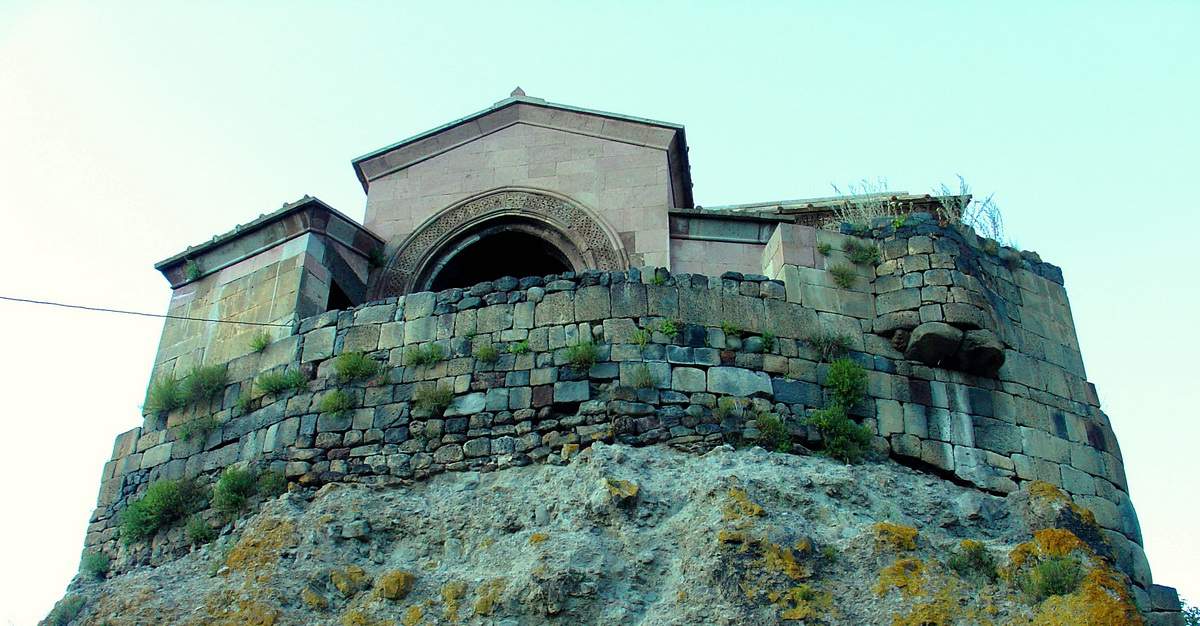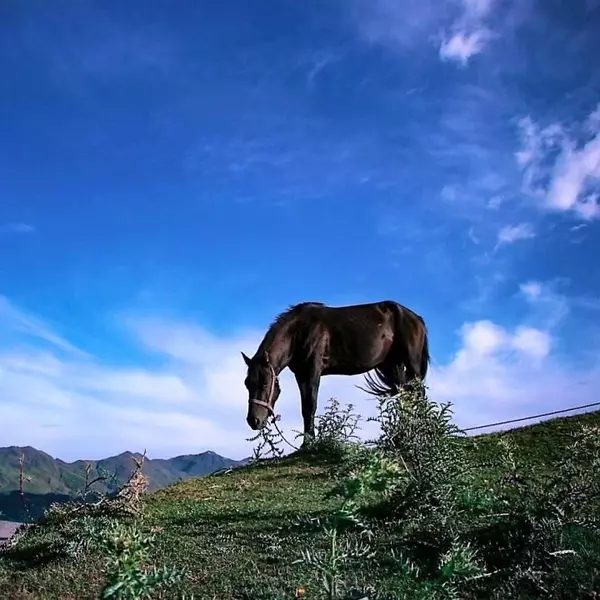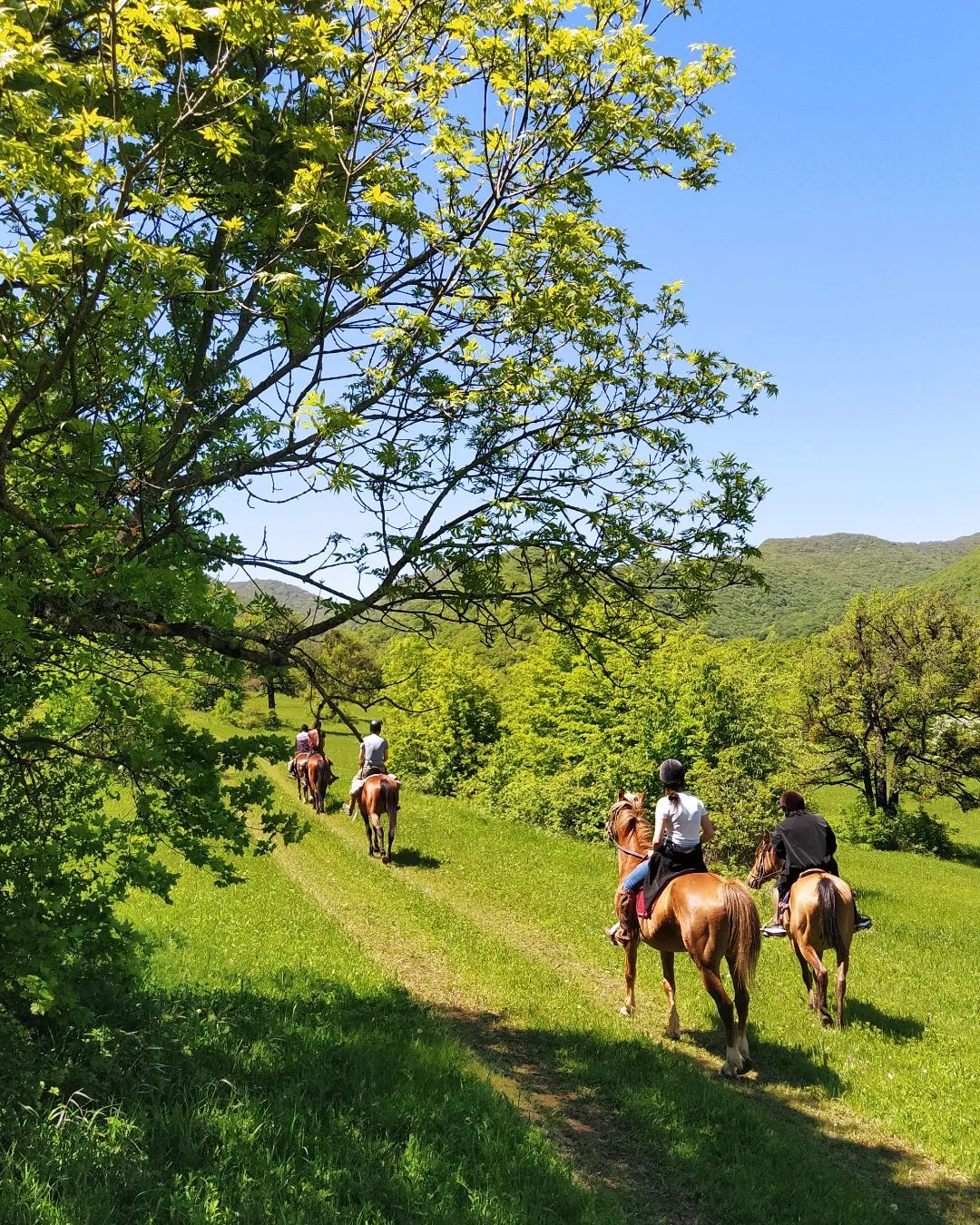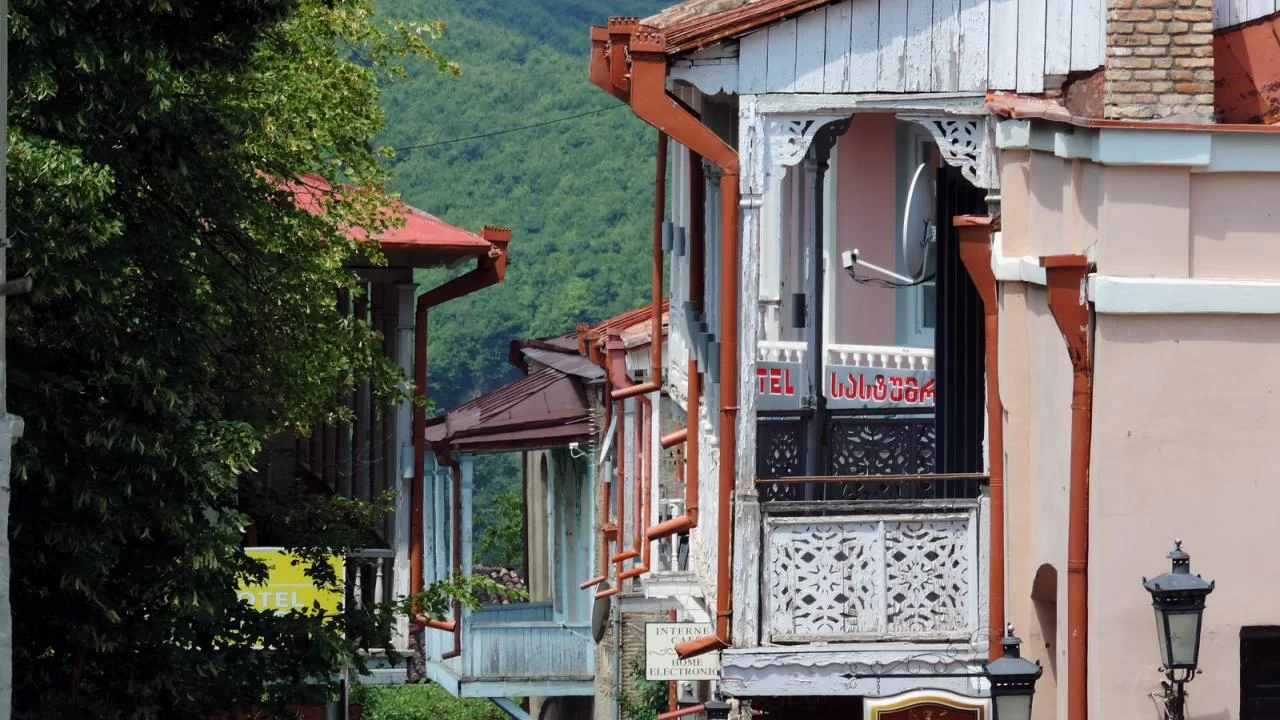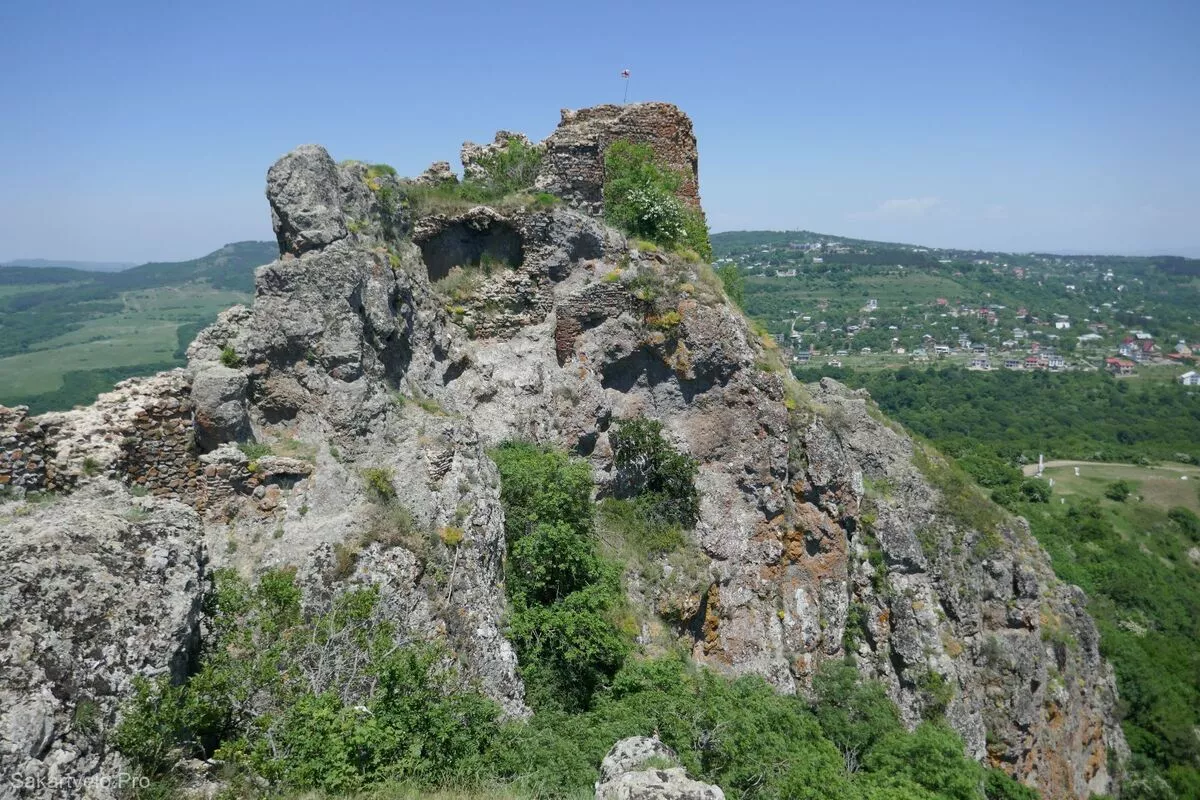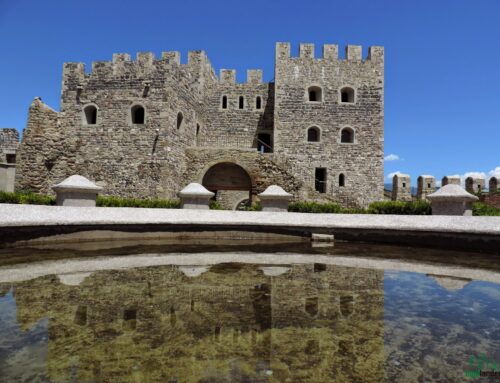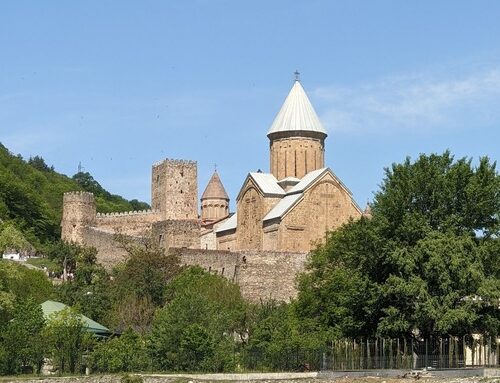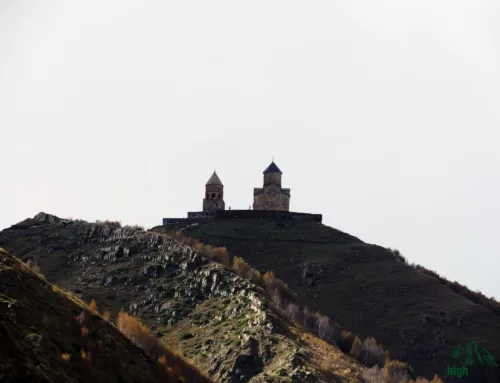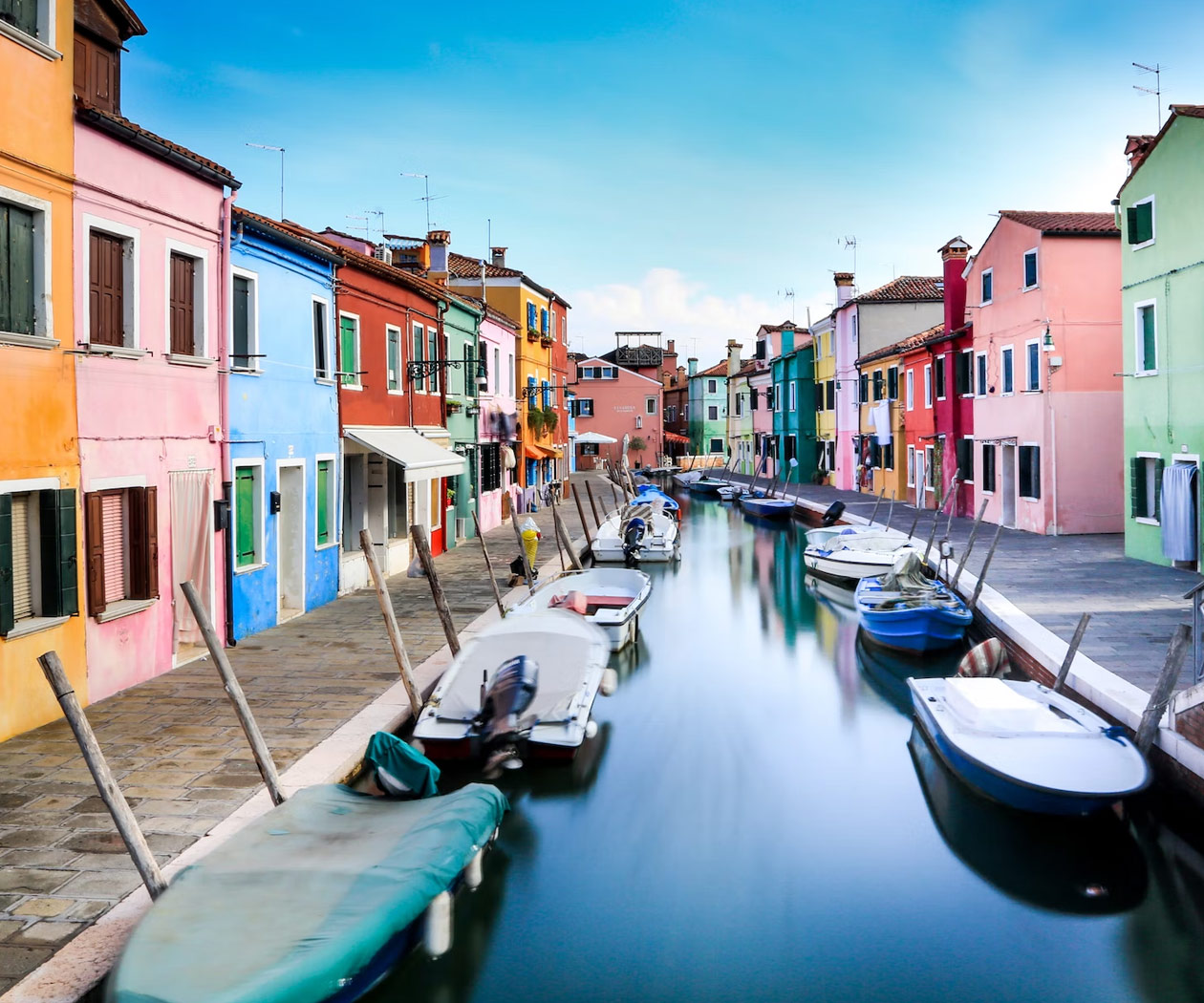Vardzia monastery: Your Guide to Georgia’s Legendary Cave Kingdom
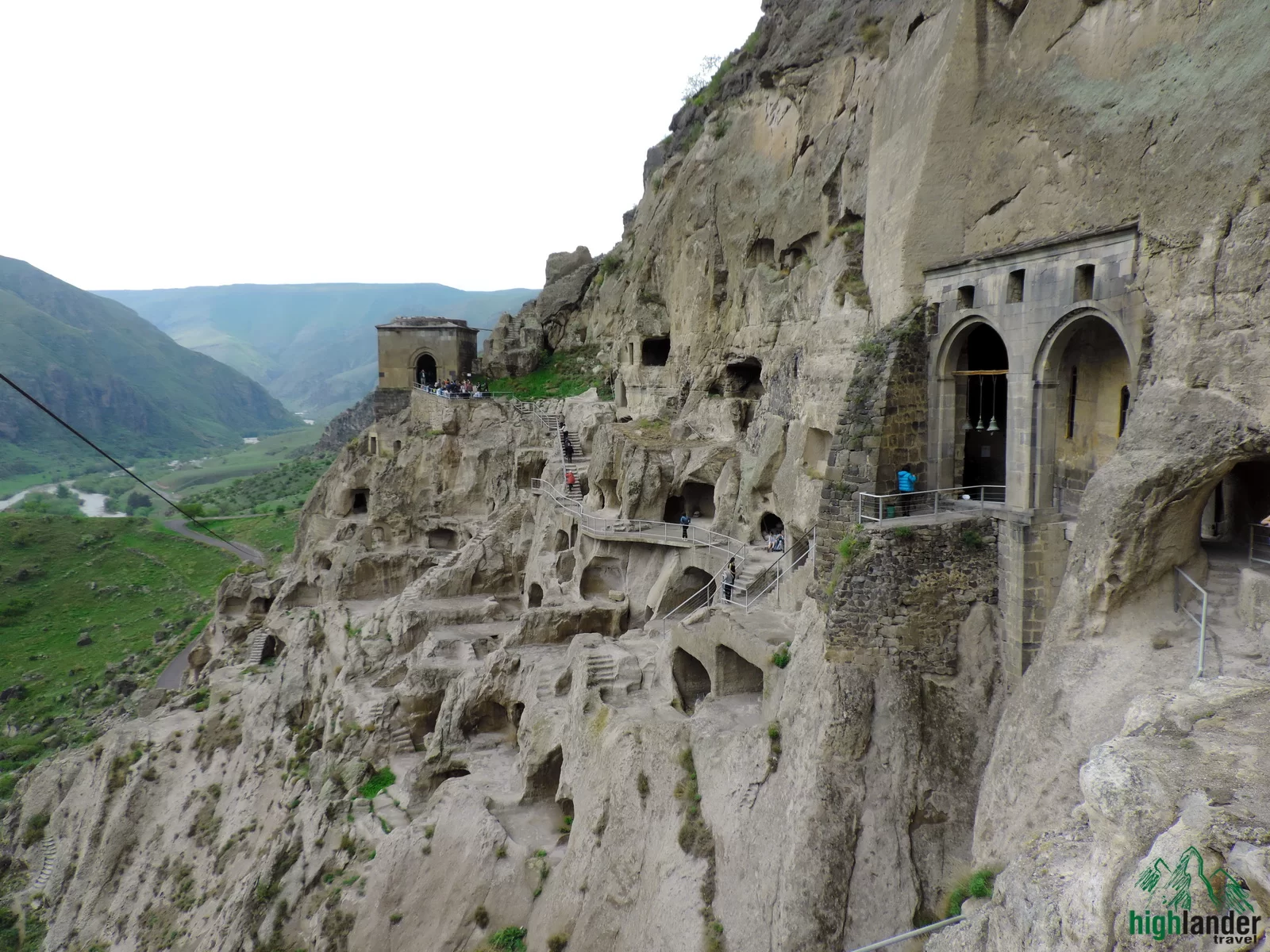
Picture a city not built of brick and mortar, but carved from the heart of a mountain. A sheer cliff face, honeycombed with thousands of windows and doorways, rising nineteen tiers above a winding river. This is Vardzia, a place that feels torn from the pages of a fantasy epic, yet it is one of Georgia’s most powerful historical realities.
Dug from the slopes of Erusheti Mountain, Vardzia is a sprawling cave monastery that became a symbol of Georgia’s 12th-century “Golden Age”. It’s a monument to the nation’s most revered ruler, Queen Tamar, and a testament to the faith and grit of a kingdom on the edge of an empire.
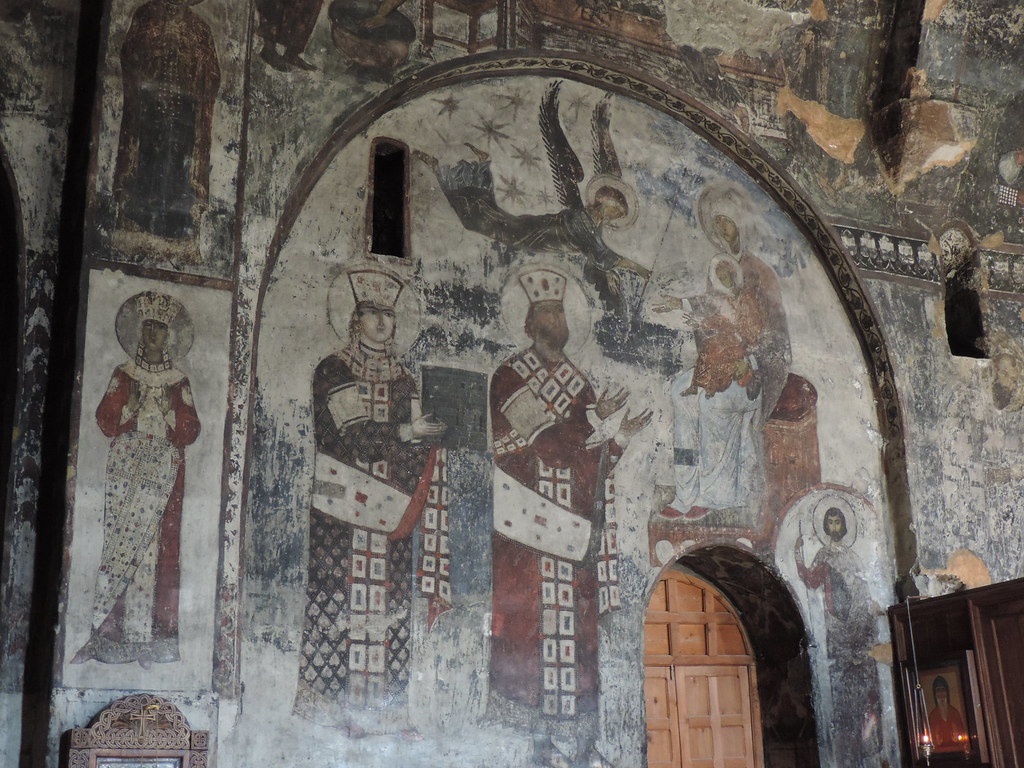
Even its name is born from legend. A young Tamar, not yet queen, was lost while playing in the unfinished caves. When her uncle called for her, her voice echoed from the stone: “Ak var, dzia!”—”I am here, uncle!”. The name stuck, forever tying this incredible place to its most famous champion.
A Royal Fortress Carved from a Cliff
Why build a city inside a mountain? In the 12th century, the Kingdom of Georgia was a Christian stronghold facing constant pressure from the powerful Seljuk Turks. Vardzia was the ultimate defense. King Giorgi III began the work, but it was his daughter, the legendary Queen Tamar, who expanded it into a thriving, fortified metropolis.
At its peak, Vardzia was a self-sufficient world hidden from its enemies. Historical accounts describe up to 6,000 rooms, capable of sheltering 50,000 people during times of war. The only entrance was a secret tunnel near the Mtkvari River, making the city a ghost to any invading army.
Life buzzed within the stone. Monks prayed in quiet cells, but the city also held everything a community needed: vast dining halls, bakeries, libraries, and even a pharmacy with small niches for medicines still visible in the rock. And, being in Georgia, there were dozens of wine cellars (marani), where giant clay amphorae (qvevri) were buried in the floor—a nod to the nation’s ancient winemaking heritage. An ingenious system of ceramic pipes supplied fresh water throughout the complex, a marvel of medieval engineering.
The Heart of the Mountain: The Church of the Dormition
Step out of the bright sunlight and into the cool, quiet heart of Vardzia: the Church of the Dormition. Carved in the 1180s, its stone walls are covered in vibrant murals that have survived for over 800 years.
The paintings depict biblical scenes, but the most captivating work is on the north wall. Here, you’ll find a rare and intimate portrait of the founders: King Giorgi III and a young Queen Tamar, holding a model of the very church you’re standing in. Painted before her marriage, it’s one of only four known frescoes of the great monarch, a priceless snapshot of history.
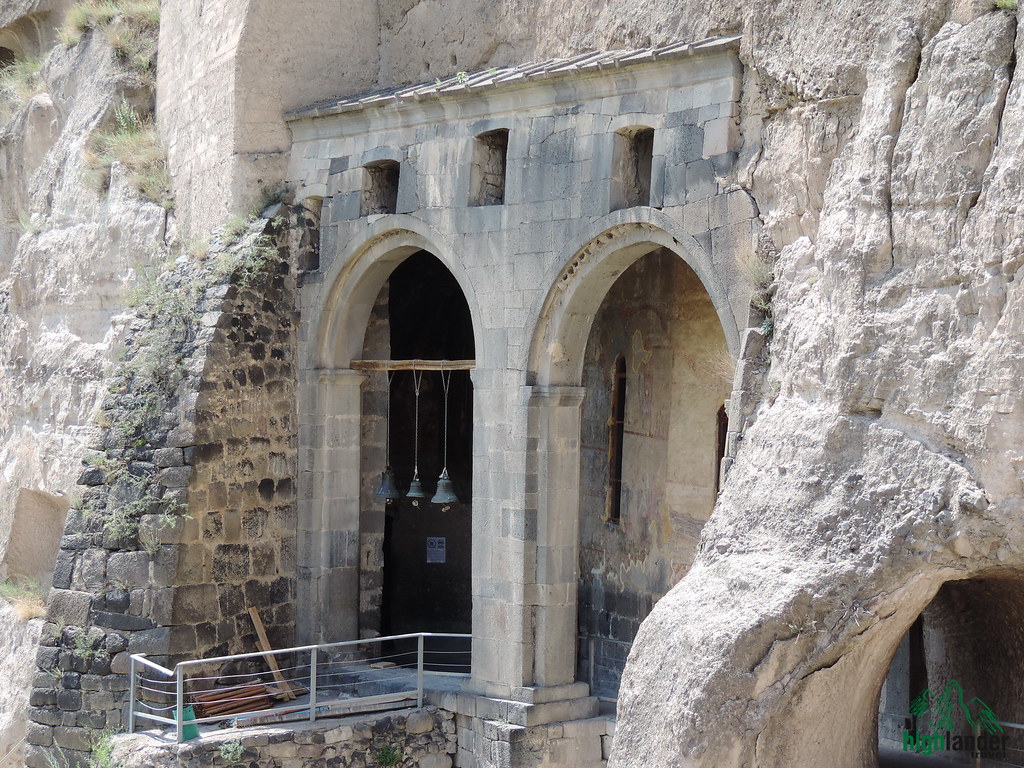
A Secret Revealed by Nature’s Fury
For a century, Vardzia remained a hidden sanctuary. But in 1283, a violent earthquake shattered its defenses. The quake tore the outer face from the cliff, destroying two-thirds of the city and exposing its secret inner world to the elements and, eventually, to its enemies.
Though the monks held on for centuries, the city’s invisibility was gone. In the 16th century, Persian and Ottoman invaders sacked the monastery, and it was finally abandoned, leaving the great cave city to fall silent.
Vardzia Today: A Living Piece of History
Today, Vardzia is a protected museum-reserve, and its story has come full circle. Since the late 1980s, a small community of monks has returned, bringing prayer and life back to the ancient stones. Their presence transforms Vardzia from a mere archaeological site into a living sanctuary. You can see their private, railed-off living areas, a quiet reminder that this incredible place is still a sacred home.
Your Ultimate Guide to Visiting Vardzia
Ready to walk through this incredible cave kingdom? Here’s everything you need to know for a smooth and memorable trip.
How to Get to Vardzia
Vardzia is in southern Georgia, region of Samtskhe-Javakhet,i, about a 4-hour drive from Tbilisi.
By Car: Renting a car offers the most freedom. The main route via Borjomi and Akhaltsikhe is straightforward and scenic.
By Marshrutka (Minibus): The budget option. Take a marshrutka from Tbilisi’s Didube station to Akhaltsikhe. From there, you can hire a taxi for the final 30-minute drive or catch one of the few daily minibuses to Vardzia.
By Guided Tour: The easiest option. Day tours from Tbilisi or Kutaisi often bundle Vardzia with other regional highlights like Rabati Fortress and Borjomi.
Opening Hours & Tickets
Hours: Generally open 10:00 AM to 6:00 or 7:00 PM, Tuesday through Sunday (closed Mondays).
Tickets: Admission is 15 GEL. A small fee for the shuttle bus from the ticket office up to the entrance is well worth it to save your energy for exploring.
Exploring the Site: What Not to Miss
Plan for at least 2-3 hours to explore without rushing. The path is a well-marked, one-way system of stairs and tunnels.
The Bell Tower: One of the few free-standing structures, offering fantastic views.
The Church of the Dormition: The absolute must-see for its incredible frescoes.
The Holy Spring: In a dark tunnel behind the church, you’ll find “Tamar’s Tears,” a natural spring that still provides cool, drinkable water.
The Tunnels: Feel like a true explorer as you navigate the rock-cut passages that connect the city.
Know Before You Go: Tips for a Great Visit
Wear Sturdy Shoes: You’ll be doing a lot of walking and climbing on uneven stone surfaces.
Dress Modestly: As this is an active monastery, covering your shoulders and knees is respectful.
Church Dress Code: To enter the main church, men need long pants. Women must wear a long skirt and cover their hair. Don’t worry if you forget—communal wraps and scarves are usually available at the entrance.
No Photos Inside the Church: Photography is strictly forbidden inside the Church of the Dormition to protect the fragile murals.
Bring a Flashlight: A phone light is fine for peeking into the darker tunnels and passages.
Be Respectful: Remember that monks live here. Keep your voice down and be mindful around their private quarters.
Explore More: What to See Nearby
Make the most of your journey to southern Georgia by visiting other amazing historical sites:
Khertvisi Fortress: A dramatic, ancient fortress perched on a rocky hill, just a short drive from Vardzia.
Rabati Fortress: A beautifully restored castle complex in the nearby city of Akhaltsikhe, with a mosque, church, and museum.
Borjomi: A famous spa town known for its mineral water and beautiful national park. It’s a perfect stop on your way to or from Vardzia.
A visit to Vardzia is more than just a tour; it’s an adventure back in time. It’s a chance to walk through halls carved by medieval hands, to stand in the same church as a legendary queen, and to feel the powerful spirit of a place that has truly stood the test of time.

